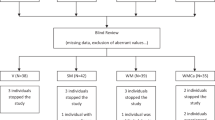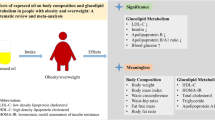Abstract
Objective: The aim of this present project was to evaluate a more satisfactory effect on plasma lipoprotein profile of spreads based on dairy fat.
Design: This study was designed as a randomised cross-over experiment with a three-week treatment separated by a three-week wash-out period. Sixty five grams of the fat content of the habitual diets was replaced by either butter/grapeseed oil (90:10) (BG); butter oil and low erucic rapeseed oil (65:35) (BR) or butter blended in a 1:1 ratio with a interesterified mixture of rapeseed oil and fully hydrogenated rapeseed oil (70:30) (BS).
Subjects: Thirteen healthy free-living young men (age 21–26 y) fulfilled the study.
Interventions: At the beginning and end of each diet period two venous blood samples were collected. Triacylglycerol and cholesterol concentrations in total plasma and VLDL, LDL, IDL and HDL fractions were measured, as were apo A-1 and apo B concentrations. Fatty acid composition of plasma phospholipids, plasma cholesterol ester and platelets was also determined.
Results: Significantly (P<0.05) lower total and LDL-cholesterol concentrations were observed after the BR and BS period, compared to BG. The effect of BR and BS did not differ. BG and BR resulted in equal concentrations of HDL-C, but significantly higher than BS. Consequently, a significantly lower LDL-C/HDL-C ratio was seen after the BR treatment compared to BG and BS. Apo A-1 concentrations were not significantly different, but Apo B was significantly increased after BG.
Conclusions: Partially replacing milk fat with rapeseed oil seems to yield a more healthy spread. Stearic acid had a HDL-C lowering effect compared to milk fat, but did not affect LDL-C significantly. The addition of stearic acid did not improve the plasma lipoprotein profile for young men with low cholesterol levels.
Sponsorship: Danish Food Research Programme (FØTEK I) and Danish Dairy Research Foundation.
This is a preview of subscription content, access via your institution
Access options
Subscribe to this journal
Receive 12 print issues and online access
$259.00 per year
only $21.58 per issue
Buy this article
- Purchase on Springer Link
- Instant access to full article PDF
Prices may be subject to local taxes which are calculated during checkout
Similar content being viewed by others
Author information
Authors and Affiliations
Contributions
Contributors: G Hølmer and B Sandström initiated the project, which was part of the PhD study of CC Becker. All the authors were involved in carrying out the experimental work. The food registration was conducted by H Jensen and B Sandström. CC Becker made the statistical analysis. CC Becker, P Lund and G Hølmer wrote the article and B Sandtröm took part in its finalisation.
Guarantor: G Hømer.
Rights and permissions
About this article
Cite this article
Becker, C., Lund, P., Hølmer, G. et al. Effects of butter oil blends with increased concentrations of stearic, oleic and linolenic acid on blood lipids in young adults. Eur J Clin Nutr 53, 535–541 (1999). https://doi.org/10.1038/sj.ejcn.1600785
Received:
Revised:
Accepted:
Published:
Issue Date:
DOI: https://doi.org/10.1038/sj.ejcn.1600785



